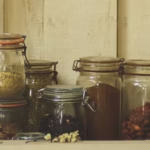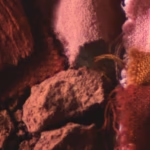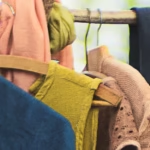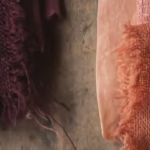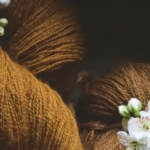Dyeing purple with local plants
Here’s a plant color experiment that took me by surprise! And a nice surprise.
I’ve been very reluctant to tell you about it, because unlike others like avocado or turmeric, the plant I’ve been experimenting with isn’t very recommendable.
But the resulting color was so pretty and apparently solid that I couldn’t keep it to myself.
During my daily walks with my dog, I came across a forest wasteland overrun with phytolacca (Phytolacca americana). It’s also known as the American grape or the dyer’s grape.
A dye yielding plant: phytolacca
Native to North America, this plant was introduced to Europe by settlers for its ornamental and dyeing qualities. Its red berries were once used to color slightly pale wines. This practice was soon abandoned, as the taste of the wine was greatly altered.
Today, phytolacca is considered an invasive plant with a strong negative impact on floral biodiversity and soil fauna. In particular, it would disrupt the earthworm population, whose presence is essential to soil life. This plant has been the focus of major efforts in the Fontainebleau and Nemours forests, where uprooting campaigns have been carried out to eradicate it.
It is mainly found in clearings and forest edges. It can also take up residence on soils that have been disturbed. Around where I live, there’s a lot of forest clear-cutting, giving way to wasteland on which the phytolacca thrives.
Although referenced for medicinal use, the entire plant is toxic. I strongly advise against self-medication.
The plant was part of Native American pharmacopoeia as a remedy for skin problems and rheumatism. Today, it is used in homeopathy in very highly diluted doses.
Despite its toxicity, its past reputation as a dye plant aroused my curiosity. I was all the more intrigued by the fact that the color obtained is reputedly not solid. The deep red of its berries is highly attractive to anyone looking for color in plants, especially as our local plants are best known for their yellow color.
Phytolacca dyeing: 100% natural colors
If you’re out walking in the woods in late summer and early autumn, you’re bound to notice this tall herb with its long clusters of red, almost black berries, if it’s present at all. She’s not the discreet type.
When I came across a forest wasteland completely colonized by phytolacca, I couldn’t resist picking a few bunches of ripe berries. Harvesting requires caution, and I recommend that you use gloves when handling them.
My dog is used to eating the fruit I pick, so I tie him up during the harvest: I care about him too much!
The ecological value of this harvest, even if limited, is worth emphasizing: the harvested fruits are fewer seeds dispersed by warblers and blackbirds. Birds are one of the few animals that can eat phytolacca fruits without fear. Through their droppings, they disseminate seeds and thus contribute to the spread of what is sometimes dubbed the “plant plague”.
When I got home, I poured the berries into a bucket and added rainwater with a little vinegar. After closing the seal, I let it warm up in the sun. And I forgot it.
A few weeks later, I fell back on the bucket. I open it up and discover a petulant violet-pink juice, a shade that’s not usually stable with local plants. I strain the juice and dip a skein of beet leaves into it. I close the seal. I abandon it to the sun again.
I then completely forgot about it. It was when the first cold weather arrived and I was tidying up what was lying around outside that I finally opened the bucket again: the wool was bright purple! But that wasn’t the surprise. Phytolacca is notorious for its unstable color. Washing often causes the color to fade.
So I washed the skein with plenty of water several times, not least to fade the unpleasant smell of fermented berries. That’s when my dyer’s heart skipped a beat. Despite repeated washing in soft, soap-free water, the color hasn’t budged. What a nice surprise!
I can’t explain the reason exactly. Perhaps the synergy with the botanical mordant of the beetroot leaves.
Next autumn, I’ll repeat the experience, perhaps paying closer attention to the process.
If you too wish to try phytolacca dyeing, wear gloves when handling the plant and reserve the dye for fibers or textiles that are not in direct contact with the skin. Once again, given its toxicity, caution is called for.
In terms of quantity, you can count on a plant weight equal to four times that of the fiber to be dyed. Therefore, to dye 100g of fiber, you’ll need 400g of ripe berries. These quantities are indicative. There’s nothing to stop you allowing more for a more saturated color.
In short: leaves of a vegetable, berries from a plant considered invasive, rainwater and the warmth of the sun are the only ingredients needed to make a pretty purple that’s 100% plant-based and local.
So, if you feel like it, try this natural dyeing experiment for a beautiful natural purple.
If you like this article, please share it. Thank you!
